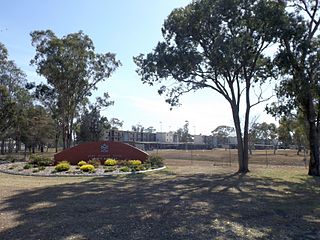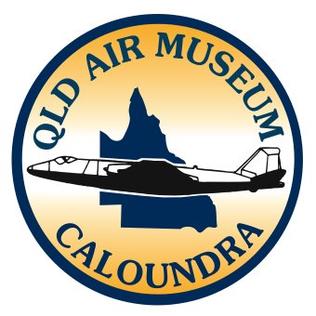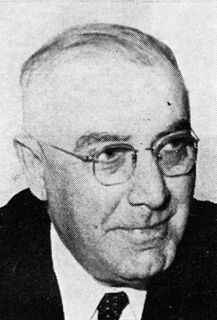
Cloncurry is a rural town and locality in the Shire of Cloncurry, Queensland, Australia. In the 2016 census the locality of Cloncurry had a population of 2,719 people.

Longreach Airport is situated in Longreach, Queensland, Australia. The airport is 1.5 nautical miles northeast of the city.

John Flynn was an Australian Presbyterian minister who founded the Australian Inland Mission (AIM) which later separated into Frontier Services and the Presbyterian Inland Mission, as well as founding what became the Royal Flying Doctor Service, the world's first air ambulance.

Nantay Pty. Ltd., trading as Maroomba Airlines since 1998, is a small airline and air charter company based in Perth, Western Australia. Founded in 1985 as Maroomba Aviation, then renamed Maroomba Air Services in 1997, the airline operates ad hoc charter services around Western Australia.

Bankstown Airport is an airport and business park located in the City of Canterbury-Bankstown, approximately 26 km (16 mi) from the Sydney Central Business District (CBD), Australia and 17 km (11 mi) west of Sydney Airport. It is situated on 313 ha of land and has three parallel runways, several apron areas, a small passenger terminal and a business park, home to more than 160 businesses. The airport, is home to numerous fixed-wing and helicopter flying schools and also caters to charter and private business flights, freight, aeromedical services, recreational flights, aircraft maintenance businesses, private aircraft and emergency services. Bankstown Airport operates 24 hours a day, with limitations placed on night circuit training.

Oakey Army Aviation Centre is situated approximately 3 km (1.9 mi) from the town centre of Oakey in Queensland, Australia. It provides a training establishment for Australian Army Aviation, and also hosts the Republic of Singapore Air Force's "Cougar" 126 Squadron. The Defence name for the facility is Swartz Barracks, named for prominent politician, Army Aviation advocate, and ex-POW Sir Reginald Swartz.

Aeromedical evacuation (AE) usually refers to the use of military transport aircraft to carry wounded personnel.

The Westpac Lifesaver Rescue Helicopter Service is a helicopter surf lifesaving service that operates in Australia.

Mount Isa Airport is an airport serving the western Queensland city of Mount Isa, Australia. It is served by a variety of scheduled regional airlines, with flights to Brisbane, Townsville and Cairns as well as several other regional centres.

The de Havilland Australia DHA-3 Drover is a small transport aircraft that was built by de Havilland Australia (DHA) in the 1940s and 1950s. The aircraft had some similarities with the two-engine British-built de Havilland Dove but used a trimotor configuration.

Charleville Airport is an airport located 1 nautical mile southwest of Charleville, a town in the state of Queensland in Australia.

Roma Airport is an airport located 2 nautical miles northwest of Roma, Queensland, Australia. The airport underwent a major redevelopment completed in April 2012, replacing the original A.T. Berry Terminal with a larger, modern facility. Much of the $14 million project funded by energy and resources companies to support their operations in the area.
Air Methods Corporation is an American privately owned helicopter operator. The air medical division provides emergency medical services to between 70,000 and 100,000 patients every year. It operates in 48 states and Haiti, with air medical as its primary business focus. Its corporate headquarters are located in the Denver Technological Center, Greenwood Village, Colorado, in the Denver metropolitan area.

Bunbury Airport is an airport servicing the Western Australian city of Bunbury. Bunbury Airport is located 8 km (5.0 mi) south-east of the city centre and is the only airport serving the city. The airport is used largely as a facility for General Aviation, pilot training and emergency services. Bunbury Airport serves an area that includes the City of Bunbury and the surrounding districts of Harvey, Dardanup, Capel and Donnybrook-Balingup.
Air ambulances in the United States are operated by a variety of hospitals, local government agencies, and for-profit companies. Medical evacuations by air are also performed by the United States Armed Forces and United States National Guard.
Clyde Cornwall Fenton OBE was the Northern Territory's first flying doctor. Unlike the other doctors with the Royal Flying Doctor Service of Australia, Fenton was also his own pilot. Fenton was a self-taught pilot, and flew without the aid of any navigation equipment, air charts, and often proper landing strips. He enjoys a particular renown as a unique and dashing Territory character.

Air medical services is a comprehensive term covering the use of air transportation, aeroplane or helicopter, to move patients to and from healthcare facilities and accident scenes. Personnel provide comprehensive prehospital and emergency and critical care to all types of patients during aeromedical evacuation or rescue operations aboard helicopter and propeller aircraft or jet aircraft.

Caboolture Airfield is an aerodrome catering to general aviation and ultralight aircraft located in Caboolture, Queensland, Australia, approximately 55 km (34 mi) north of the state capital Brisbane, adjacent to the Bruce Highway. The airfield is maintained and operated by the Caboolture Aero Club Incorporated and shares a large training area with nearby Caloundra Airport and Redcliffe Airport. The airfield is a popular site for the restoration of historic aircraft and a number of associated businesses are located onsite.

The Queensland Air Museum is a not-for-profit community owned aviation museum located at Caloundra Airport in Queensland, Australia. Its mission is to collect and preserve all aspects of aviation heritage with an emphasis on Australia and Queensland. The museum has the largest collection of historical aircraft in Queensland and it also has a large collection of aircraft engines, equipment, artefacts, photographs and books.

Wilfred Arthur Baird (1889–1954), also known as Wilfred Arthur Beard, was the first chief engineer of the Australian airline Qantas. He established Qantas's reputation for excellence in engineering.























